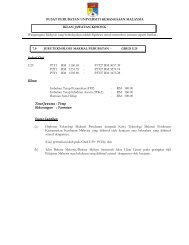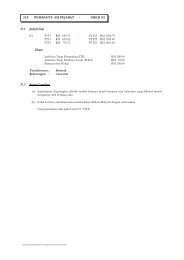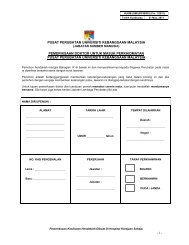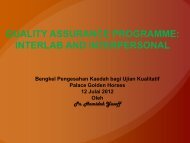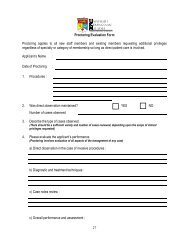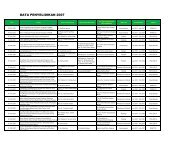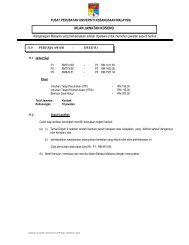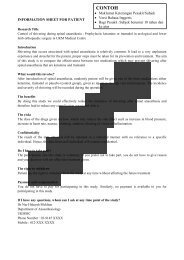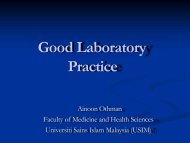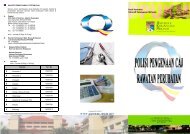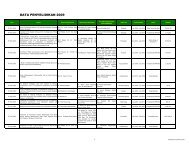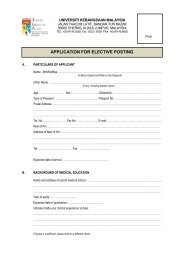sini - UKM Medical Centre - Universiti Kebangsaan Malaysia
sini - UKM Medical Centre - Universiti Kebangsaan Malaysia
sini - UKM Medical Centre - Universiti Kebangsaan Malaysia
Create successful ePaper yourself
Turn your PDF publications into a flip-book with our unique Google optimized e-Paper software.
126 • Panduan Prasiswazahconcepts, public health issue and epidemiological tools. The module istaught in a systematic sequence of themes by means of lectures, laboratoryactivities, laboratory skills, class discussions, extramural activities andtutorials as the core of problem-based learning. Finally, we hope that thestudents will strive hard to achieve success in this course which will beconducted in 6 weeks.Neurobehavior System (S3.2) ModuleThe Neurobehavior and Senses System (NBSS) incorporate knowledge andskills concerning the nerves, brain, mind, and special senses which formhuman beings. We need to understand the functions of each structure inorder for us to get a better understanding of ourselves. There are ten triggercases that reflect each part of the NBSS. They are Myeloradiculopathy andSomatoform disorder (peripheral nerves and sensory function), Hearingloss and vertigo (the ear and equillibrium), Decreased visual activity (theeye), Stroke (the cerebral blood flows and metabolism), Alzheimer diseaseand Dementia (the cerebral cortex), Mood disorder and Personality disorder(the limbic system), Epilepsy and Schizophrenia (brain activities and brainwaves), Tetanus and Anxiety disorder (the autonomous nerves system),Meningitis (the protective layer, CSF, and motor function), and CerebralPalsy with Mental Retardation (child neurobehavior). The neurobehaviorsystem is related to the human life, from a cell to organism and from infancyto elderly. Students will find this topic interesting. This system includesethical concepts, public health issue and epidemiological tools. The moduleis taught in a systematic sequence of themes by means of lectures, laboratoryactivities, laboratory skills, class discussions, extramural activities andtutorials as the core of problem-based learning. Finally, we hope that thestudents will strive hard to achieve success in this course which will beconducted in 10 weeks.Dermatomusculoskeletal System (S4.1) ModuleDermatomusculoskeletal system is part of the supporting and maintenancesystem. Students will learn about the most common diseases affectingthe skin, muscles, bones and joints. Students will be provided with a basicunderstanding of the pathophysiology, aaetiology and clinical presentationof a wide variety of infectious, traumatic, genetic, degenerative, vascular,immunologic and neoplastic diseases. The muscles and bones are covered bythe skin. The musculoskeletal system is elucidated according to the regionsin the human body. The dermatomusculoskeletal system is related to thehuman life, from a cell to organism and from infancy to elderly. Studentswill find this topic interesting. This system includes ethical concepts, publichealth issue and epidemiological tools. The module is taught in a systematicsequence of themes by means of lectures, laboratory activities, laboratoryskills, class discussions, extramural activities and tutorials as the core of



